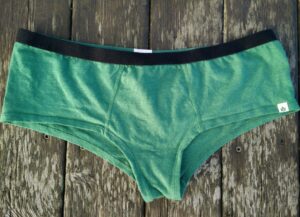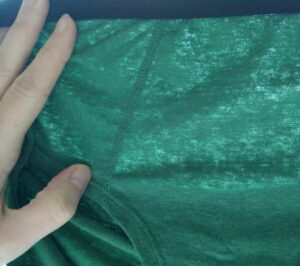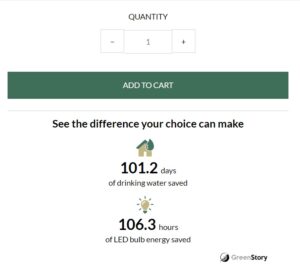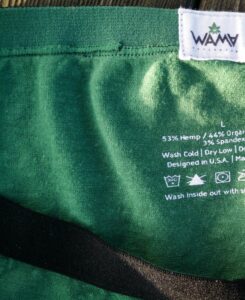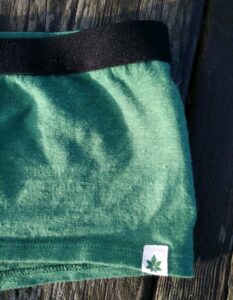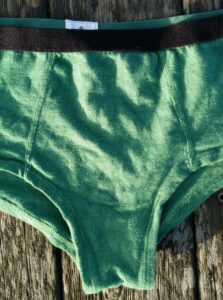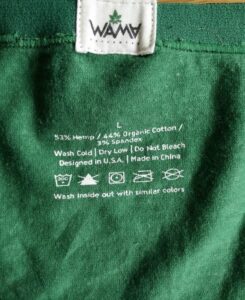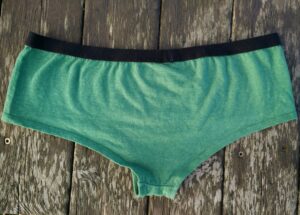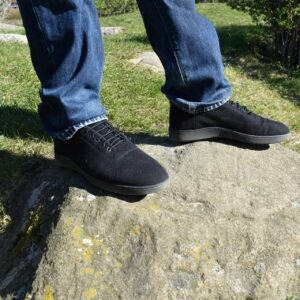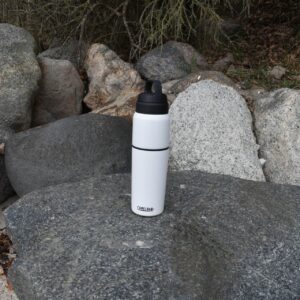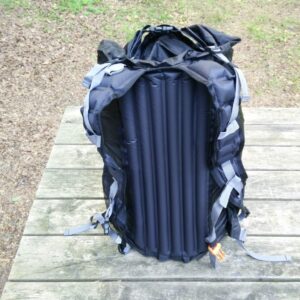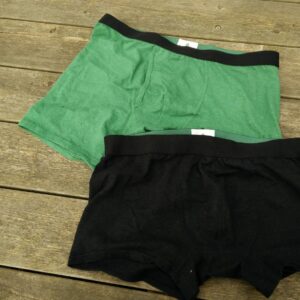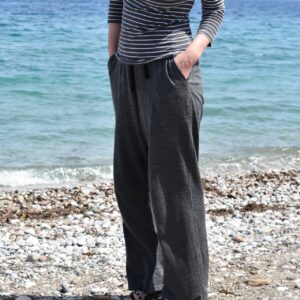In late summer I received the Wama Hemp Hipsters for testing. Hemp is a much more sustainable fabric fiber than most base layer materials, and therefore I was excited to test the underwear which is made of approximately half-half hemp and organic cotton. As I was heavily pregnant when I received the Wama hipsters, I have mostly been testing them on easy hikes, walks with the stroller and for everyday use. Here is what I found out.
Wama Hemp Hipsters are suitable for:
- Everyday use
- Low intensity hiking
Material
The Wama hemp hipsters are made of 53% hemp, 44% organic cotton and 3% spandex. The feel of the material is slightly rougher than 100% cotton, but still pleasant on the skin. In terms of performance, hemp and cotton have some similarities as well as differences. While cotton fibers are softer, both materials get softer with washing, take quite long time to dry and are about equally breathable. Hemp is, however, more durable and has some anti-microbial properties to keep odor-causing bacteria at bay. Now, I have been testing naturally anti-microbial underwear both in the form of Merino wool mixed with silk (the Falke silk-wool underwear) and now hemp mixed with cotton, and I have to say that although there might be a slight difference in their odor level after a full day of hiking compared to panties made of 100% cotton, I have still not felt inclined to wear anti-microbial underwear for more than one day.
This sentiment may just be due to the habit of changing underwear every day, but on the other hand I have used naturally anti-microbial Merino base layers for many more days than cotton tops – even after the Merino shirts had been soaked with sweat from hiking. Aside from performance, there is another very important difference between hemp and cotton – the environmental impact of their production process. As described in the article Sustainable Outdoor Materials growing cotton conventionally requires 10.000 liters of water per kilo of the fiber, and accounts for 10-16% of the global pesticide usage while only taking up 2.5 % of cropland worldwide. In comparison 1 kilo of dry hemp matter (of which 30% is suitable for clothing production) requires 300-500 liters of water, and less than half the territory to produce the same amount of finished textile.
These large-scale numbers might be hard to relate to, and even feel downright silly to take into consideration when purchasing something as simple and small as underwear but for each of their products Wama has included ‘sustainability counters’. These show how much water and energy you have saved by choosing Wama’s underwear made of hemp and organic cotton versus underwear made of conventional grown cotton – and the numbers may just surprise you!
Comfort, fit, sizing and functionality
Although I was eight months pregnant when I received the underwear, it fitted me perfectly both before and after birth due to the low cut of the hipsters. Size L was a good fit for me with 40 inches (101 cm) wide hips, so I’d say that their sizing is pretty correct. Note, however, that Wama (like most other manufacturers) bases underwear sizing on waist circumference instead of hip circumference. The ‘height’ at the side seams of the fabric is 14 cm (5.5’’) and there is good, if not full cheek coverage, which I’m personally in big favor of.
You can also get Wama hemp underwear for women in the form of bikini briefs, high-waisted briefs, boy shorts and thongs, but the latter is not recommended for hiking as it provides too little cheek coverage and thus warmth. Due to their cut, thongs are also more prone to transport bacteria from the anal area to the vagina while walking or moving, which can lead to infections. Not to mention that thongs are just all-around uncomfortable to wear! Wama’s hipsters are, on the other hand, designed to be super comfortable to wear. The washing instructions are printed on the inside, rather than on a label, the elastic waistband is soft and brushed on the inside, and the underwear is stitched with flatlock seams all over. Rather than being placed on the sides (or God forbid, mid-front and -back) the connecting stitches are placed around the groin of the hipsters, which gives them a sporty boyish look.
Washing and drying
The Wama hipsters should be washed inside out on the cold setting (max. 30 ⁰C) and only be tumble-dried on the low setting. It should be noted, however, that all garments will last longer if air-dried – not to mention that it is a much less energy-consuming and thus sustainable way to dry textiles. You can read more about reducing the environmental footprint of your clothing here.
Verdict
The Wama hemp underwear is for sure a great replacement for cotton underwear – especially when it comes to sustainability. But cotton is in general not recommended for hiking because it takes too long to dry, which can become a serious problem if you first sweat and then get cold – for example when reaching a windy peak or taking a longer break where your body temperature drops. This is also why my boyfriend didn’t recommend his Wama men’s hemp underwear for aerobic activities. I am, however, a bit on the fence. In general women feel colder and sweat less than men, so if you (like me) rarely sweat on the butt and keep the intensity level moderate I don’t see a reason why you shouldn’t wear the Wama hipsters on shorter easy hikes out and about.
If you have any questions about this product, drop me a line in the comments below.
Rating
| Design |  |
| Quality |  |
| Comfort |  |
| Functionality |  |
We field tested this product. The rating shows its overall performance.About Rating
Pros:
- Soft cotton-like fabric
- Comfortable design features
- Sustainable and durable material
Cons:
- Material absorbs too much moisture (and dries too slow) for high-intensity activities
